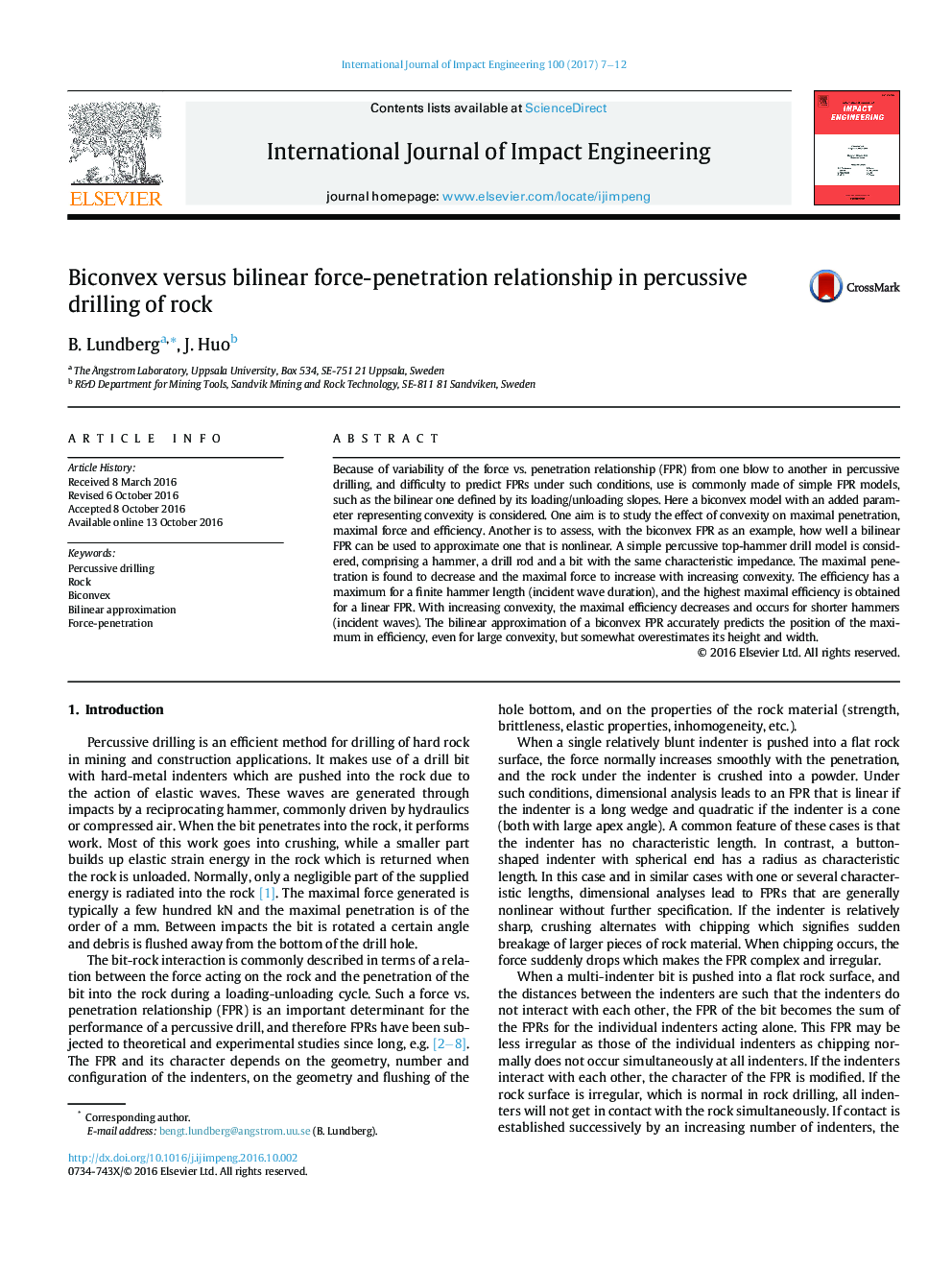| Article ID | Journal | Published Year | Pages | File Type |
|---|---|---|---|---|
| 5015630 | International Journal of Impact Engineering | 2017 | 6 Pages |
Abstract
Because of variability of the force vs. penetration relationship (FPR) from one blow to another in percussive drilling, and difficulty to predict FPRs under such conditions, use is commonly made of simple FPR models, such as the bilinear one defined by its loading/unloading slopes. Here a biconvex model with an added parameter representing convexity is considered. One aim is to study the effect of convexity on maximal penetration, maximal force and efficiency. Another is to assess, with the biconvex FPR as an example, how well a bilinear FPR can be used to approximate one that is nonlinear. A simple percussive top-hammer drill model is considered, comprising a hammer, a drill rod and a bit with the same characteristic impedance. The maximal penetration is found to decrease and the maximal force to increase with increasing convexity. The efficiency has a maximum for a finite hammer length (incident wave duration), and the highest maximal efficiency is obtained for a linear FPR. With increasing convexity, the maximal efficiency decreases and occurs for shorter hammers (incident waves). The bilinear approximation of a biconvex FPR accurately predicts the position of the maximum in efficiency, even for large convexity, but somewhat overestimates its height and width.
Keywords
Related Topics
Physical Sciences and Engineering
Engineering
Mechanical Engineering
Authors
B. Lundberg, J. Huo,
